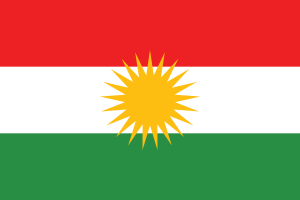Language/Northern-kurdish/Vocabulary/Months-and-Seasons
| ◀️ Days of the Week — Previous Lesson | Next Lesson — Numbers ▶️ |
Introduction[edit | edit source]
In this lesson, we will learn about the months and seasons in Northern Kurdish. Understanding the months and seasons is essential for daily life conversations and planning activities. We will explore the names of the months and seasons, their pronunciation, and their significance in Northern Kurdish culture. By the end of this lesson, you will be able to confidently talk about the months and seasons in Northern Kurdish.
Months[edit | edit source]
Let's start by learning the names of the months in Northern Kurdish. The Northern Kurdish calendar is based on the Gregorian calendar, which is widely used around the world. However, the Northern Kurdish language has its unique names for the months.
Here is a table with the Northern Kurdish names, their pronunciation, and their English translations:
| Northern Kurdish | Pronunciation | English Translation |
|---|---|---|
| Rêbendan | [reːbɛndan] | January |
| Sibat | [siːbat] | February |
| Adar | [adɑr] | March |
| Nîsan | [niːsɑn] | April |
| Gulan | [ɡulɑn] | May |
| Hezîran | [hɛziːrɑn] | June |
| Tîrmeh | [tiːrmɛh] | July |
| Gelawêj | [ɡɛlɑwɛːʒ] | August |
| Rezber | [rɛzbɛr] | September |
| Kewçêr | [kɛwtʃɛːr] | October |
| Sermawez | [sɛrmɑwɛz] | November |
| Berfanbar | [bɛrfɑnbɑr] | December |
Take your time to practice pronouncing the names of the months correctly. It may take some practice to get the pronunciation right, but don't worry, with time and effort, you will become more comfortable.
Seasons[edit | edit source]
Now let's move on to the seasons in Northern Kurdish. Just like in English, Northern Kurdish has four seasons: spring, summer, autumn, and winter. Each season has its unique characteristics and is associated with specific activities and weather conditions.
Here are the seasons in Northern Kurdish, along with their pronunciations and English translations:
| Northern Kurdish | Pronunciation | English Translation |
|---|---|---|
| Bahar | [bɑhɑr] | Spring |
| Reş | [rɛʃ] | Summer |
| Payîz | [pɑjiːz] | Autumn |
| Zivistan | [zivistɑn] | Winter |
Now, let's learn some interesting facts about each season in Northern Kurdish culture.
Bahar (Spring)[edit | edit source]
Spring in Northern Kurdish culture is a time of rejuvenation and new beginnings. The arrival of spring is celebrated with various festivals and traditions. It is the season when nature comes back to life, and the countryside is filled with colorful flowers and blossoming trees. People often spend time outdoors, enjoying picnics, hiking, and participating in traditional dances and music performances.
Reş (Summer)[edit | edit source]
Summer is a vibrant season in Northern Kurdish culture. It is a time when families and friends come together to celebrate weddings, engage in outdoor activities, and enjoy the warm weather. The summer months are perfect for swimming in rivers and lakes, going on camping trips, and indulging in delicious seasonal fruits and vegetables.
Payîz (Autumn)[edit | edit source]
Autumn is a beautiful season in Northern Kurdish culture, characterized by the changing colors of the leaves and the harvesting of crops. It is a time of gratitude and celebration for the abundance of nature's gifts. People celebrate the autumn harvest with feasts, music, and dancing. It is also a time for storytelling and sharing traditional folk tales around the bonfire.
Zivistan (Winter)[edit | edit source]
Winter in Northern Kurdish culture is a season of coziness and togetherness. It is a time when families gather around the fireplace, drink hot tea, and enjoy traditional winter foods like soups and stews. Winter is also a time for storytelling, playing traditional board games, and celebrating the New Year. The snowy landscapes create a magical atmosphere, and children often engage in snowball fights and build snowmen.
Exercises[edit | edit source]
Now it's time to practice what you have learned. Here are some exercises to reinforce your knowledge of the months and seasons in Northern Kurdish:
1. Match the Northern Kurdish months with their English translations: - Rêbendan - Sibat - Adar - Nîsan - Gulan
2. Fill in the blanks with the correct Northern Kurdish season: - __________ is the season when nature comes back to life. - Families and friends come together to celebrate weddings in __________. - The changing colors of the leaves characterize the beauty of __________. - Winter is also known as __________ in Northern Kurdish.
Solutions[edit | edit source]
1. Match the Northern Kurdish months with their English translations: - Rêbendan: January - Sibat: February - Adar: March - Nîsan: April - Gulan: May
2. Fill in the blanks with the correct Northern Kurdish season: - Bahar is the season when nature comes back to life. - Families and friends come together to celebrate weddings in Reş. - The changing colors of the leaves characterize the beauty of Payîz. - Winter is also known as Zivistan in Northern Kurdish.
I hope you enjoyed this lesson and feel more confident in your knowledge of the months and seasons in Northern Kurdish. Practice using these words in your daily conversations, and soon they will become second nature to you. Keep up the good work, and in the next lesson, we will explore the numbers in Northern Kurdish.
Other Lessons[edit | edit source]
- Numbers
- Sports and Fitness
- Counting and Numbers
- Animals
- Fruits
- Drinks
- Food
- Feelings and Emotions
- Family
Template:Northern-kurdish-Page-Bottom
| ◀️ Days of the Week — Previous Lesson | Next Lesson — Numbers ▶️ |

